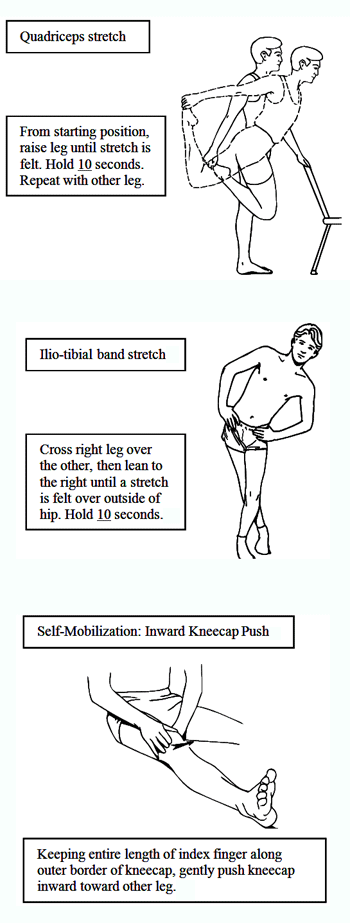Crisis Plan Series
Patello-femoral (knee cap) joint dysfunction

Patello-femoral (knee cap) joint dysfunction is a very common knee problem in Hong Kong. The main cause could well be repetitive strain of the patello-femoral joint often from prolong walking especially stairs and hills without warm-up and stretches. The lack of general exercises and stretches causes general joint stiffness, muscle tightness and weakness (muscle imbalance) . The tightness in the calf (lower leg) muscles, hamstrings (back of the thigh), lateral quadriceps (front of the thigh), iliotibial band (side of the thigh) and hip flexors (front of the hip) increases the whole knee joint compression force. More importantly, such tightness pulls the patella (knee cap) laterally (outward), increasing mal-tracking and tension to the patellar tendon and its insertion (where it attaches to). The lack of or the poor instructions on strengthening exercises enhance such imbalance. As a result, the supra-patellar (above the knee cap) and lateral (outside) ligaments and soft tissues of the patella are often tight; the patellar (knee cap) tendon and its surrounding soft tissues are often thickened and tender; and the patello-femoral joint is often swollen with crepitus (clicking) . Such joint signs could persist for years before the patient gradually becomes aware of the symptoms or be acutely aggravated by some minor triggering incidence.
Although the patient will have to rest from painful activities, immobilization is detrimental as the knee will only stiffen up and degenerate more. Knee full range flexion (bending) and extension (straightening) mobility exercises should be performed as often as possible. Crepitus may increase initially but it may 'smooth out' as the joint loosens. Daily muscle stretches, especially rectus femoris, iliotibial band, hamstrings and calf muscles, are important. Deep friction massage to the thickened ligaments and soft tissues could be painful but the patient should be reassured of its importance, 'no pain no gain'. Passive patello-femoral joint mobilizations are necessary to reduce stiffness and help its re-alignment. Some of these mobilization techniques could be taught to patients who may perform their self-treatment at home so as to encourage more proactive treatment approach to promote recovery and prevent aggravation and deterioration. Specific strengthening exercises could then be taught if progression is satisfactory. Patient may range from teenagers to seniors. Most patients will respond to such treatment as long as they follow instructions.
Luck LI
Musculoskeletal Physiotherapist
Although the patient will have to rest from painful activities, immobilization is detrimental as the knee will only stiffen up and degenerate more. Knee full range flexion (bending) and extension (straightening) mobility exercises should be performed as often as possible. Crepitus may increase initially but it may 'smooth out' as the joint loosens. Daily muscle stretches, especially rectus femoris, iliotibial band, hamstrings and calf muscles, are important. Deep friction massage to the thickened ligaments and soft tissues could be painful but the patient should be reassured of its importance, 'no pain no gain'. Passive patello-femoral joint mobilizations are necessary to reduce stiffness and help its re-alignment. Some of these mobilization techniques could be taught to patients who may perform their self-treatment at home so as to encourage more proactive treatment approach to promote recovery and prevent aggravation and deterioration. Specific strengthening exercises could then be taught if progression is satisfactory. Patient may range from teenagers to seniors. Most patients will respond to such treatment as long as they follow instructions.
Luck LI
Musculoskeletal Physiotherapist
